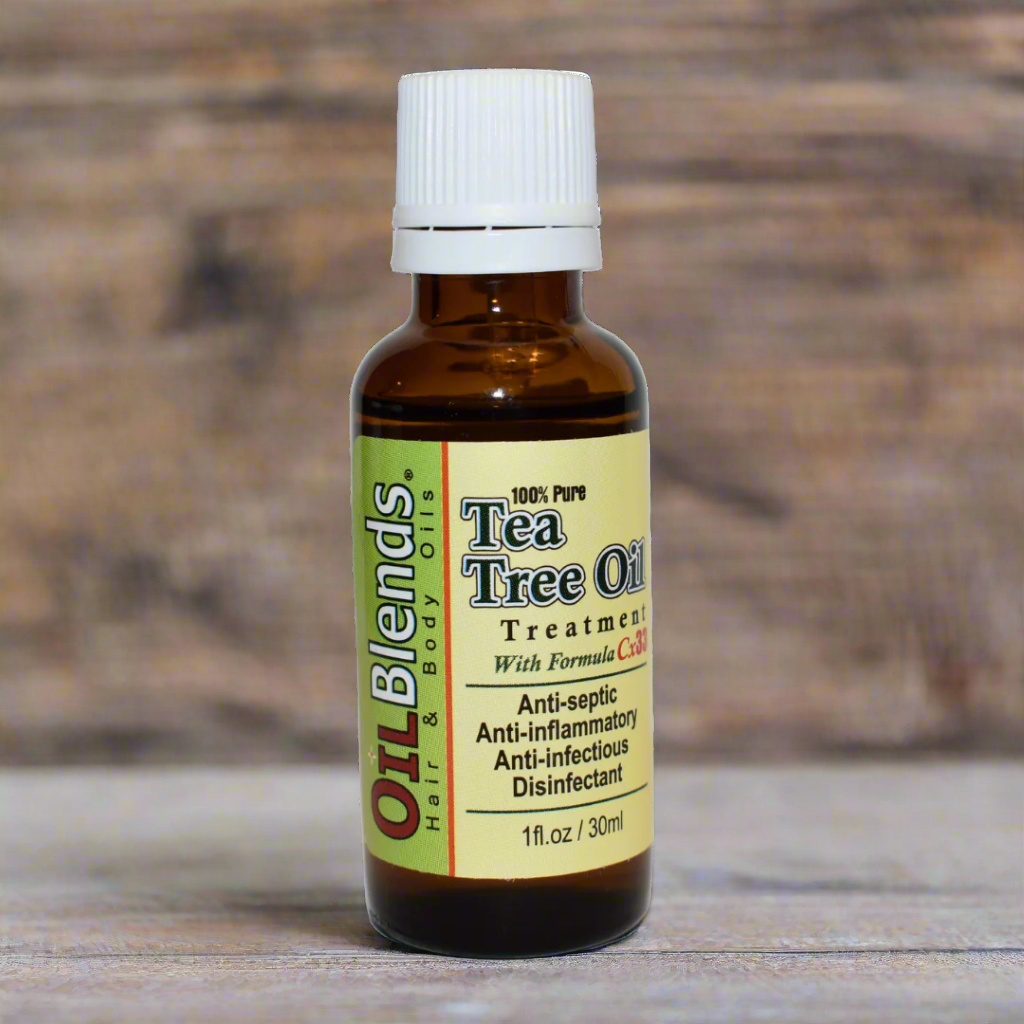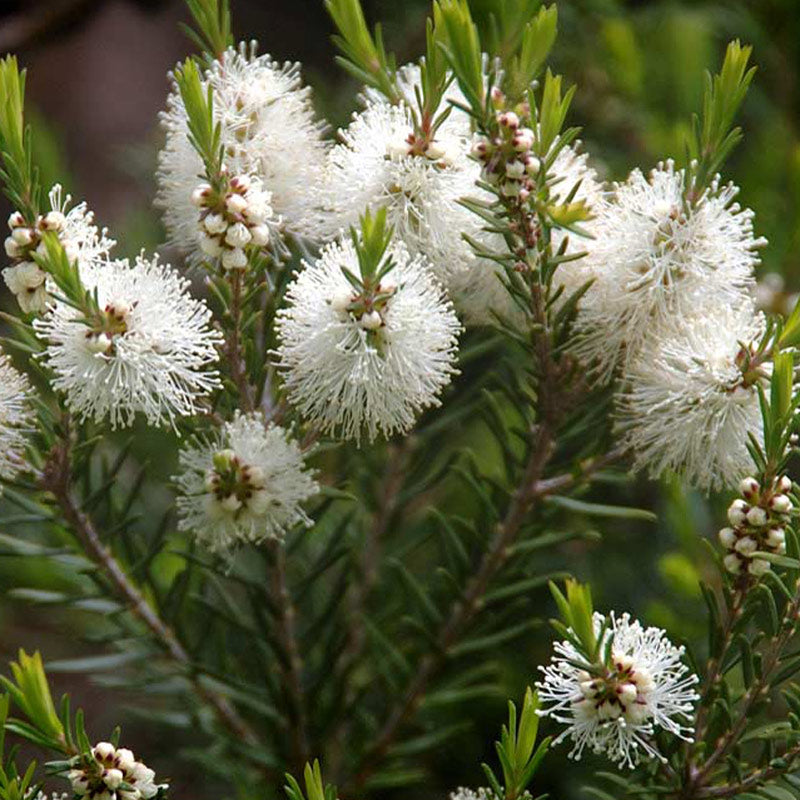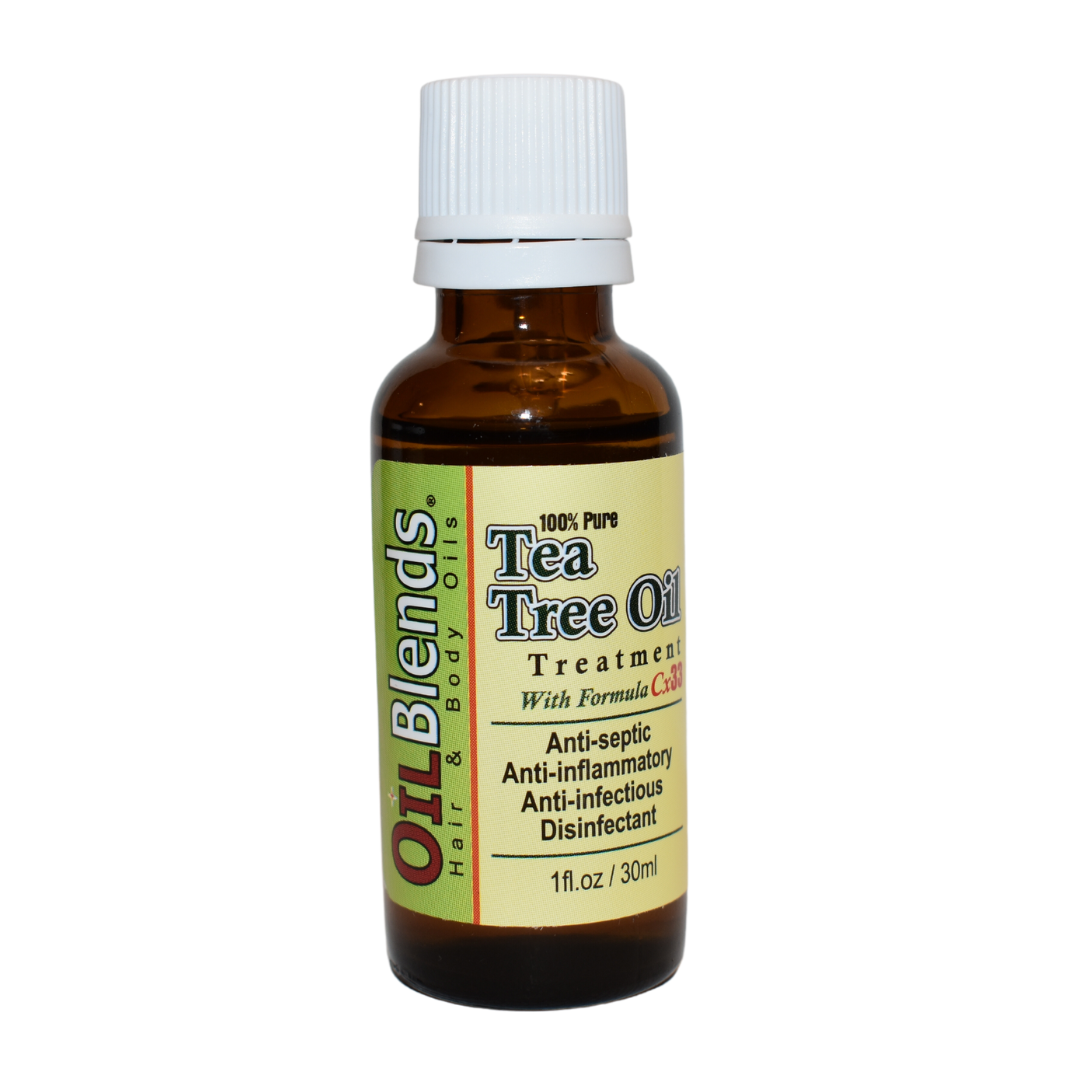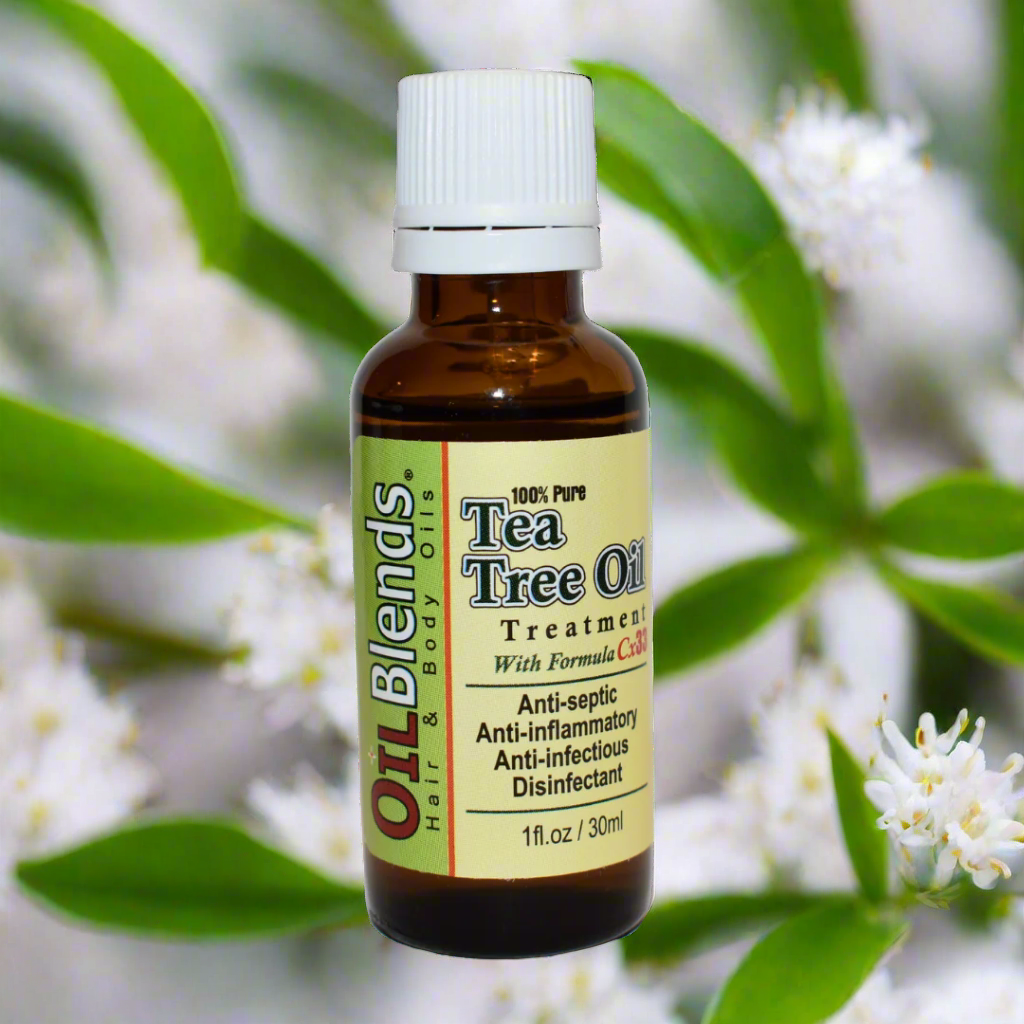Control Pimples, Blackheads, Control Acne & Acne-Prone Skin, and Ingrown Hair
Use to control acne and/or eliminate pimples, razor bumps and ingrown hair.
How to use:
Step 1: Cleanse with - Tea Tree Oil Soap or Tea Tree Foaming Facial Cleanser
Step 2: Treatment - Tea Tree Oil Treatment
Step 3: Moisturize - Uncle Benney's Turmeric Natural Lightening Butter
OilBlends
Tea Tree Oil Treatment - Controls Facial Hyperpigmentation, Inflamed skin, Razor Bumps, Ingrown Hair, Acne-Prone Skin
Tea Tree Oil Treatment - Controls Facial Hyperpigmentation, Inflamed skin, Razor Bumps, Ingrown Hair, Acne-Prone Skin
Couldn't load pickup availability
OilBlends -Tea Tree Oil Treatment - 30 ml
Anti-bacterial, Anti-Inflammatory and Skin Healing - Product of Australia
Specially formulated for:
- Facial Hyperpigmentation
- Inflamed skin
- Razor Bumps
- Ingrown Hair Treatment
- Pimples and Blackheads
- Control Acne & Acne-Prone Skin
Steam distilled from the leaves and twigs
How to Cleanse with OilBlends - Tea Tree Oil Treatment
How to Cleanse with OilBlends - Tea Tree Oil Treatment
Heals the skin, helps control acne and bacteria. Use before and after hair removal to help heal ingrown hair problems and help stop breakouts.
- Wash face with warm water using Tea Tree Oil Soap or Foaming Facial Cleanser (to open pores)
- Soak a cotton pad with warm water
- Squeeze out excess water
- Add 5 drops of OilBlends Tea Tree Oil Treatment to the damp cotton pad
- Wipe face and neck thoroughly with pad until all dirt and residue is removed
- Rinse off thoroughly with warm water
- Apply once a day, every other day
How to Remove Ingrown Hair
How to Remove Ingrown Hair
Exfoliate: Use a gentle exfoliating scrub or a washcloth to remove dead skin cells around the ingrown hair. This can help to release the trapped hair.
Warm Compress: Apply a warm compress to the area with the ingrown hair for a few minutes. This can help to soften the skin and open up the hair follicle, making it easier to remove the hair.
Sterilize Tools: If you're using tweezers or a needle to remove the ingrown hair, make sure they are sterilized to prevent infection. You can do this by wiping them with rubbing alcohol.
Gently Release the Hair: If you can see the ingrown hair looped under the skin, carefully use sterilized tweezers or a needle to lift the hair out of the skin. Be gentle to avoid causing further irritation or damage to the skin.
Don't Dig: Avoid digging or picking at the skin to try to get the hair out. This can lead to further irritation, infection, or scarring.
Apply an Antiseptic: After removing the ingrown hair, apply an antiseptic lotion, tea tree oil, or cream to the area to prevent infection.
Avoid Tight Clothing: Tight clothing can increase friction and irritation in the area of the ingrown hair, so try to wear loose-fitting clothing until the area has healed.
Seek Medical Attention if Necessary: If you're unable to remove the ingrown hair yourself or if it becomes infected, it's best to seek medical attention from a dermatologist. They can provide treatment options such as corticosteroid creams, antibiotics, or even surgical removal if necessary.
How to use Before and After Shaving
How to use Before and After Shaving
Before Shaving:
- Wash the area with warm water to remove surface dirt and oils
- Apply Tea Tree Oil Treatment:
- Put a few drops on a clean cotton pad
- Gently massage over the area you’ll be shaving
- Let it sit for 1–2 minutes to help disinfect the skin and soften hair - Shave as usual with a clean razor
After Shaving:
- Rinse the shaved area with warm water to remove any leftover shaving cream or hair
- Apply Tea Tree Oil Treatment again:
- Use a few drops on a clean cotton pad
- Gently wipe or pat the shaved area to help reduce irritation, razor bumps, and prevent infection - Let it absorb for a few minutes before applying moisturizer if desired.








